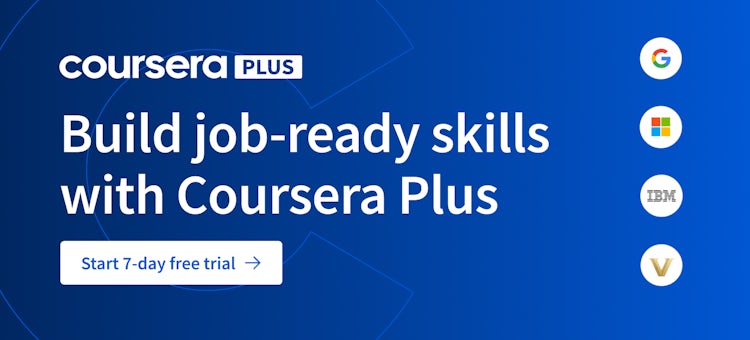12 Project Management Methodologies + How to Choose the Right One
Set your project up for success by applying the right project management methodology.
![[Featured image] A project manager stands in an office, smiling.](https://d3njjcbhbojbot.cloudfront.net/api/utilities/v1/imageproxy/https://images.ctfassets.net/wp1lcwdav1p1/5tNNuXC58P8VGeGolrG42b/539a6bdf662434032649651e2637b474/product_management.png?w=1500&h=680&q=60&fit=fill&f=faces&fm=jpg&fl=progressive&auto=format%2Ccompress&dpr=1&w=1000)
A project management methodology is a guiding framework for teams to follow as they plan, execute, and successfully wrap up projects. Each methodology outlines specific processes and tools to use, and each is better suited for certain types of projects, so it will be important to determine which one best fits the needs and scope of your project.
Learn about some of the more common project management methodologies, as well as how to choose the right one. Afterward, learn more about the foundations of Agile, with a focus on Scrum, with the Google Project Management Professional Certificate.

professional certificate
Google Project Management:
Get on the fast track to a career in project management. In this certificate program, you’ll learn in-demand skills, and get AI training from Google experts. Learn at your own pace, no degree or experience required.
4.8
(115,780 ratings)
1,949,092 already enrolled
Beginner level
Average time: 6 month(s)
Learn at your own pace
Skills you'll build:
Project Management, Change Management, Strategic Thinking, Career Development, Organizational Culture, Risk Management, Quality Management, Project Execution, Agile Management, Problem Solving, Coaching, Scrum, Influencing, Effective Communication, Stakeholder Management, Business Writing, Project Charter, Procurement, Task Estimation, Project Planning
What is a project management methodology?
A project management methodology is a structured framework that outlines how work should be organized, managed, and delivered. It includes specific processes, tools, and techniques to help teams achieve their project goals. There are many options to choose from, and each has different strengths.
Project management methodologies help teams:
Establish consistent ways of working
Define clear roles and responsibilities
Set expectations for communication
Determine how to track progress
Manage resources and timelines
Handle changes and risks
Ensure quality standards are met
Traditional vs. Agile project management
Project management methodologies are typically framed using one of two approaches: traditional and Agile. Whereas a traditional approach follows a linear path with detailed, upfront planning and one major deliverable at the end, Agile follows a more iterative approach with multiple deliverables throughout the process.
Traditional: A traditional approach to project management requires upfront planning and approval before work begins. The team's success will be measured by how well the deliverable meets the predetermined scope, budget, and timeline. This approach is useful because it provides clear structure and predictability, but it can be inflexible if changes arise. Consider this approach for projects with well-defined requirements, clear deliverables, and stable environments, such as construction or manufacturing projects.
Agile: An Agile approach is iterative, meaning teams work to continuously improve a product. Agile allows for greater responsiveness as changes arise. Agile also encourages ongoing customer collaboration throughout the project life cycle, rather than relying solely on initial contract negotiations. Consider this approach for projects with a lot of uncertainty or complexity, as well as for software and product development.
12 popular project management methodologies
Often one of the first decisions you’ll make as a project manager will be which methodology to follow. Keep in mind that there isn’t one best option. Instead, the ideal methodology is the framework (or hybrid) that best fits your project, team, and company.
1. Waterfall
The Waterfall method, first designed by Winston W. Royce in 1970 for software development, is a traditional approach to project management. With the Waterfall methodology, a project "flows" through a series of steps or phases. Generally, each phase of the project life cycle must be completed before the next can begin.
Waterfall stages
Requirements: In this first phase, you’ll work with stakeholders to clearly define the project scope and requirements.
Design: The critical design phase is when you plan what the final product will look like and what steps your team needs to take to achieve it.
Implementation: This is where all your planning gets put into action. For software projects, this is when programmers will write the actual code.
Verification: During verification, your team tests the product to ensure it meets the requirements laid out in the first phase.
Maintenance: After the project is complete, the development team responds to feedback and makes any necessary modifications.
When to use waterfall
The logical flow of waterfall makes it an excellent option for short, predictable projects where you have a clear vision of the finished product and fixed project requirements that are not likely to change. It’s best suited for teams and PMs that excel at planning and documentation.

2. Scrum
Scrum is a lightweight Agile methodology designed to help product teams deliver work incrementally and iteratively. It includes a set of roles (like Scrum Master) and short delivery cycles called sprints.
Scrum practices
Sprint: Short (1-4 week) development cycles where a team creates a useable product increment
Daily Scrum: 15-minute daily stand-up meetings held during a sprint where the team plans work for the next 24 hours
Product backlog: Prioritized list of work to be done on a product
Sprint review: Informal session where the development team presents their finished iterations to stakeholders for feedback
When to use Scrum
The Scrum method, best for self-managing teams and a culture open to innovation, can help bring products to market more quickly. The short development cycles and frequent stakeholder involvement can often lead to a better-quality product.


professional certificate
IBM IT Scrum Master
Advance your career in IT as a Scrum Master. Develop the in-demand skills and hands-on experience to get job-ready in 3 months
4.7
(435 ratings)
13,983 already enrolled
Beginner level
Average time: 5 month(s)
Learn at your own pace
Skills you'll build:
Scrum Master, Risk Management, Communication, Leadership, agile, Kanban Board, Product Roadmap, User Story, Sprint backlog, Software Engineering, Software Architecture, Python Programming, Agile and Scrum, Software Development Lifecycle (SDLC), Kanban, Sprints, Product Backlog, Zenhub, Scrum Methodology, Agile Software Development, Sprint Planning, Project Management, Information Technology, Cloud Computing, security, Operating Systems, Agile Management, Scrum (Software Development), Servant Leadership, CI/CD, Devops, TDD/BDD, Cloud Native, CSM, Scrum Alliance, Certification
3. Kanban
Kanban is another Agile methodology, but this one helps visualize workflow to improve efficiency. The method got its start in the Japanese manufacturing industry before gaining popularity across many fields.
At the center of the Kanban method is a Kanban board—a physical or digital tool that divides workflow into columns organized by development stage. This helps eliminate multitasking by encouraging teams to focus on only a few tasks at a time. It also makes it easy for both the team and stakeholders to quickly see where the team is in the development process.
Kanban practices
Visualize the workflow. The Kanban board visualizes a team’s workload in a way that’s easy to understand and execute.
Limit work in progress. Restricting the number of tasks a team is working on at any given time helps maintain focus.
Manage flow. This method switches the focus from managing people to managing a smooth flow of work.
Make policies explicit. Keep them simple, visible, and easy to understand.
Use feedback loops. Revisiting project goals regularly helps the team respond to changes and take advantage of new opportunities.
Improve collaboratively. Teams with a shared vision can work together to achieve continuous improvement. These evolutions should be based on metrics and experimentation.
Learn more: Best Project Management Software for 2025
When to use kanban
If you want to limit planning and meetings and focus on continuous improvement, kanban could be a good choice. It’s particularly effective in helping teams work through big backlogs or deal with frequent requests from stakeholders.

4. Lean
The Lean methodology focuses on maximizing value by reducing waste and improving efficiency. It came from Toyota and has expanded in popularity well beyond manufacturing. The Lean methodology centers on five principles, outlined in the book The Machine that Changed the World and Lean Thinking.
Lean practices
Understand value: Think about value from the customer’s perspective. What are they willing to pay?
Identify the value stream: Use visual techniques to map out the actions required to develop and launch a product. Use this map to identify areas of waste.
Create value flow: Eliminate waste caused by excess inventory, time spent waiting, or performing more work than necessary.
Use a pull approach: Deliver value as the customer requests it so you focus on what the customer actually wants while eliminating time spent on features that might not matter.
Continuously improve: Always seek perfection by assessing the project regularly for ways to reduce waste and enhance value.
When to use Lean
The focus on waste elimination makes Lean a natural fit for more traditional manufacturing projects. But it can also be effective in other industries, particularly when you want to keep the focus of development on the customer first.

5. Critical Path Method (CPM)
The Critical Path Method defines the longest sequence of tasks that must be completed to successfully complete a project. These are the tasks that, if stalled, could cause delays in the entire project. The method also maps out the dependencies between tasks and an estimate of how long each task will take to complete.
Mapping out these elements can help establish important project deadlines and define a more accurate project schedule.
When to use CPM
CPM is best for projects with a well-defined series of tasks that need to be performed in a set order (construction projects, for example). It’s a good option to keep projects with a fixed deadline on schedule.

7. Critical Chain Management (CCM)
Where CPM focuses on time, the Critical Chain Method (CCM) shifts the focus to the supply chain. This method is used to map out a critical path based on resource availability. These resources could include people, physical space, equipment, or other physical components. Unlike a CPM map, a critical chain project management map includes scheduled “buffers” to remind a project team that a certain resource is necessary to finish a critical task.
When to use CCM
CCM is well-suited for projects that rely on limited or time-sensitive resources to complete. Overestimating task durations by building in buffers helps teams meet deadlines even in the face of unforeseen circumstances.


specialization
Supply Chain Management
Supply Chain Management. Master the Fundamentals: Logistics, Operations, Planning, Sourcing, and Strategy
4.8
(12,817 ratings)
207,353 already enrolled
Beginner level
Average time: 1 month(s)
Learn at your own pace
Skills you'll build:
Forecasting, Lean Six Sigma, Supply Chain Risk Management, Logistics, Supply Chain, Six Sigma, Microsoft Excel, Planning, Demand Forecasting, Warehouse Management, Logistics Planning, Inventory, Sourcing Best Practices, Strategic Sourcing, Supply Chain Sourcing, Supply Chain Strategy
7. PRINCE2
PRINCE2 stands for Projects in Controlled Environments. While used primarily by the British government, the PRINCE2 method has been applied to projects in various industries around the world because it is designed to be scalable to fit other needs.
It’s a process-based project management methodology used to answer certain basic questions in product development:
What are you trying to achieve?
When will you start?
What do you need to complete it?
Do you need help?
How long will it take?
How much will it cost?
When to use PRINCE2
PRINCE2 is particularly popular outside the US — it’s used in more than 150 different countries. If your project involves multinational stakeholders, it might be worth considering this method. The focus on robust organization makes it more appropriate for complex yet predictable projects.

8. PMBOK
The Project Management Body of Knowledge, or PMBOK for short, isn’t so much a methodology as a collection of best practices and guidelines outlined by the Project Management Institute (PMI). The book, regularly updated by PMI, breaks down projects into the following stages, often referred to as the lifecycle of a project:
Introduction
Growth
Maturity
Decline / Retirement
For large companies managing multiple projects, PMBOK can help standardize terminology and practices across different departments.
When to use PMBOK
Just about every company and project can benefit from the standardized practices outlined in PMBOK. Project managers who pursue the Project Management Professional (PMP) certification will want to be familiar with the material.

9. PRiSM
The Projects Integrating Sustainable Methods (PRiSM) model of project management emphasizes environmental sustainability. Specifically, the method focuses on minimizing ecological risks and increasing benefits that may impact the five Ps: people, planet, prosperity, process, and products.
Unlike other methodologies, PRiSM looks at projects beyond the scope of development to consider their impact beyond delivery.
PRiSM principles
Commitment and accountability: Organizations should take responsibility for a clean environment, employee well-being, and equal opportunities.
Ethics and decision-making: All decisions should take into account the short and long-term impacts on both society and the environment.
Integrated and transparent: Projects should promote financial, environmental, and social benefits at all policy levels.
Values-based: Projects should use technology to use resources more efficiently.
Social and ecological equity: Project managers should evaluate any impact a project many have on vulnerable populations or environmentally sensitive areas using demographic data.
Economic prosperity: Fiscal planning should balance the needs of company stakeholders and future generations.
When to use PRiSM
This approach is best for projects with an established environmental impact, such as real estate and industrial projects. It’s not as useful for things like software development, where environmental impact is less of a concern.

10. Six Sigma
Six Sigma, a quality management process developed at Motorola in the 1980s, comprises a set of tools and techniques to eliminate errors in development. This can help reduce costs and customer complaints stemming from errors.
Six Sigma processes
Define: Analyze a business problem from a customer perspective.
Measure: Measure the problem in terms of data and define a performance metric.
Analyze: Quantify your goals and determine if your process is efficient and effective.
Improve: Find ways to improve process implementation.
Control: Implement and maintain the solution.
When to use Six Sigma
Six Sigma tends to be most effective in large organizations with several hundred or more employees.


specialization
Six Sigma Yellow Belt
Improve Your Career With Six Sigma Knowledge. Learn proven principles and tools to improve quality assurance in your organization
4.7
(7,705 ratings)
131,836 already enrolled
Beginner level
Average time: 1 month(s)
Learn at your own pace
Skills you'll build:
Data Collection, Six Sigma Yellow Belt, Statistics, Binomial Distribution, Data Analysis, Causality
11. Lean Six Sigma
As you may have guessed from the name, this methodology combines elements from Lean and Six Sigma to form a powerful process improvement approach. Lean Six Sigma combines Lean's focus on eliminating waste and increasing efficiency with Six Sigma's aim to reduce process variation and defects. Together, they improve process speed and efficiency, reduce costs, enhance quality, increase customer satisfaction, and minimize errors.
Originally developed in manufacturing, Lean Six Sigma is now widely used across industries, including health care, finance, and service. It's particularly effective for organizations looking to improve operational efficiency and quality while also reducing costs.
12. Extreme Project Management (XPM)
Doug DeCarlo, the creator of Extreme Project Management (XPM), defines it as “the art and science of facilitating and managing the flow of thoughts, emotions, and interactions in a way that produces valued outcomes under turbulent and complex conditions.”
This flexible approach helps teams adapt to the unknowns that pop up during a project, including frequent changes to requirements and complex project needs. For software development projects, this is sometimes referred to as extreme programming.
When to use XPM
XPM works best for short development cycles with less-defined product specifications. Teams that like to experiment to see what works could thrive with this method.


specialization
Generative AI for Project Managers
Boost your project management career with gen AI . Learn in-demand skills and gain generative AI expertise to advance your project management career in less than a month.
4.7
(217 ratings)
6,241 already enrolled
Intermediate level
Average time: 1 month(s)
Learn at your own pace
Skills you'll build:
Artificial Intelligence, Generative AI, Prompt Engineering, Project Management, Prompt engineering, Machine Learning, Artificial Intelligence (AI), ChatGPT, Large Language Models (LLM), Natural Language Generation, prompt patterns, Prompts, Idea generation, Generative AI Tools, Project Management lifecycle
How to choose a project management methodology
The best project management method for your project, team, and organization will depend on the four factors we've outlined below.
1. Evaluate the project. Does your project have fixed or flexible requirements? Is the finished product well-defined, or will the team take a creative approach to defining it? How complex is it, and how long will it take to complete? What physical resources are involved? Will the stakeholders or clients be readily available, and how involved would they like to be?
2. Consider your team. Some methods work well with small, self-managing teams. Others lend structure to larger cross-functional teams. Also take into account what method your team might already be used to. Would the benefits of implementing a new method outweigh the time cost of teaching it?
3. Look at the organization. What are your company’s goals and values? You’ll want to choose a methodology that aligns with these elements. Some companies may prefer and employ a particular approach that you’ll need to adapt to.
4. Think about your tools. Some project management tools are flexible enough to work with various different methodologies. Others might be more specific to a particular approach. Make sure the tools and project management software you’re proficient in are a good match for whatever methodology you select.
Build and strengthen your project management skills on Coursera
Gain access to over 10,000 courses from industry leaders such as Google, IBM, Amazon, and Meta with a monthly or annual Coursera Plus subscription. Build or strengthen your knowledge about project management, including different methodologies and industries, through a number of Professional Certificates and Specializations, which you can add to your resume once you complete them.

Article sources
Keep reading
- March 18, 2025
- April 5, 2024
- 4 min read · October 16, 2024
- January 14, 2025
- March 14, 2025
- 6 min read · November 14, 2024
Coursera Staff
Editorial Team
Coursera’s editorial team is comprised of highly experienced professional editors, writers, and fact...
This content has been made available for informational purposes only. Learners are advised to conduct additional research to ensure that courses and other credentials pursued meet their personal, professional, and financial goals.
Build job-ready GenAI data analytics skills
New! DeepLearning.AI Data Analytics Professional Certificate.

Achieve your career goals
Subscribe to earn unlimited certificates and build job-ready skills from top organizations.
